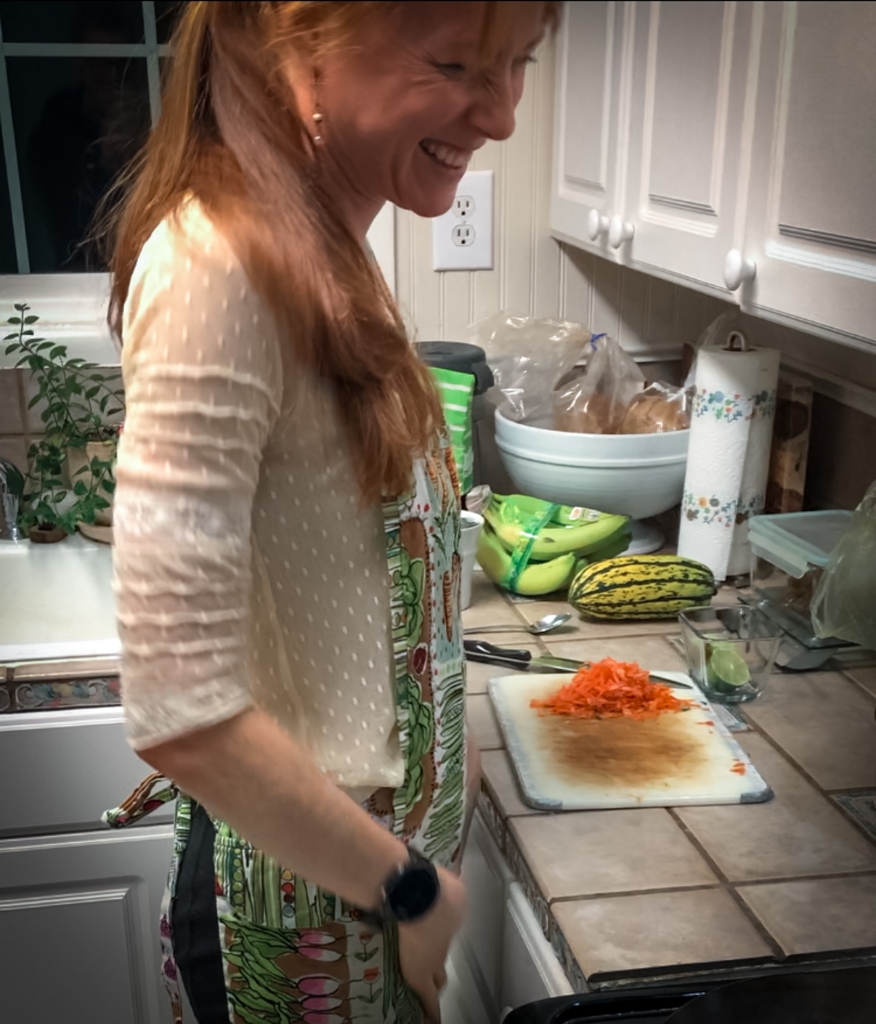How to improve your gut health naturally and sustainably

Hi there. Just a quick message today that’s been on my mind lately. As many of you know, within the nutrition clinic, I specialize in digestion and gut health. In reality, even though someone might show up with health goals that don’t seem to do with gut health, nearly everyone with a health condition or imbalance has a gut health imbalance.
That’s because, if your hormones or endocrine system are out of wack, there’s a gastrointestinal component that’s involved too.
Or if you can’t lose weight (or can’t gain weight), there’s usually a gut and inflammation component to that weight resistance.
Or if your issue is blood sugar dysregulation or some sort of cardiovascular health issue, the gut is involved, and at the microbial level, is often a big component of healing and returning to balance.
What about common health concerns in athletes?
What about common concerns in athletes, such as low iron or iron deficiency anemia, fatigue without an iron deficiency, or poor workout recovery? First, it’s often as likely that you have an issue absorbing iron as that you’re not eating or supplementing enough, particularly because as your iron needs goes up, the digestive system, when functioning well, will preferentially absorb more iron of every bit you consume. That is true for many other minerals too.
Inflammation – The Common Culprit
At the heart of nearly every physical ailment is inflammation. Inflammation can be systemic or localized to one body system or part, but it often begins in the gut.

Gut Healing – Adding More Types of Foods
Over the years, I’ve given out lots of simple to-dos that one can implement to help digestive healing or rebalancing health in general (check out my last post because it’s a really good one!).
Today, I’ll share something we don’t often hear enough about from Dr. Google or all those companies marketing their products or special diets. And to be fully honest, no single tactic you implement to heal the gut is going to solve the whole issue. This is why it’s a good idea to work with a functional nutritionist (CNS), because then you’ll get unique guidance based on your presentation of symptoms and health imbalance.
But for today, let’s just touch on the importance of eating diversely.
Many of my clients come to me eating extremely routine meals from day to day with little variation. That can be because they don’t feel well and don’t know what to eat. Or because they’ve gotten into a routine, or they feel overwhelmed when grocery shopping. Or they don’t meal plan or prep.
Rather than taking away more foods and restricting your diet more when you don’t feel well or don’t know what to do, when I’m in a clinic with an individual client, I’m often encouraging him or her to be adding more foods.
Yes, we will screen for reactivity to top foods of concern and then eliminate them when needed, for as long as needed (which doesn’t necessarily mean forever!) But beyond that, a big to-do for clients is to start adding more diversity. Instead of eating just one or two grains, like rice or wheat, I’ll have them start adding a whole host of the many other grains. Instead of eating the same small handful of vegetables from day to day, they’ll begin experimenting and adding in more colors, textures, and flavors of in-season vegetables. Instead of just eating the same almonds or pecans or cashews in their breakfast or snack, I’ll ask them to rotate every day or every time they shop.
Why is all this important?
A big component of both gut health and overall health is having high diversity in beneficial gut microbiome species (1,2). And you only get high diversity if you’re eating lots of different (mostly plant) foods. That’s because the food for the bacteria is what you are eating, and each species or strain will have a preferred food, meaning if you feed them what they eat, they’ll thrive, but if you don’t, their population will disappear.
Now, if you think about the “Standard American Diet,” individuals are often eating different foods like pizza, tacos, pasta, burgers, meat and potatoes…but they’re eating mostly ultra processed foods that are the same small rotation of foods at the ingredient level: corn, soy, wheat, sugar, beef, pork, chicken, cow’s dairy, a small handful of processed oils.
With a diet with minimal diversity, there’s not much to work with at the gut microbial level, particularly because the balance of microbes that’s going to help the gut thrive, are mostly species that feed on plants.

Eating the Rainbow
When working with clients, a tactic I often recommend is to eat the rainbow – shopping for and preparing foods that are in season, and different from week to week and season to season.
In the nutrition clinic, I work with clients in individual nutrition consultations, and as a Licensed Dietician / Nutritionist (LDN/LD) and Board-Certified Nutrition Specialist (CNS), use medical nutrition therapy, integrative health measures, and a root cause approach to heal imbalanced health conditions.
If you’d like to learn more about how you can improve your symptoms of imbalance, I’d love to speak with you in a quick phone consultation!
References:
1. Gomaa E. Z. (2020). Human gut microbiota/microbiome in health and diseases: a review. Antonie van Leeuwenhoek, 113(12), 2019–2040. https://doi.org/10.1007/s10482-020-01474-7 2. Hills, R. D., Jr, Pontefract, B. A., Mishcon, H. R., Black, C. A., Sutton, S. C., & Theberge, C. R. (2019). Gut Microbiome: Profound Implications for Diet and Disease. Nutrients, 11(7), 1613. https://doi.org/10.3390/nu11071613




